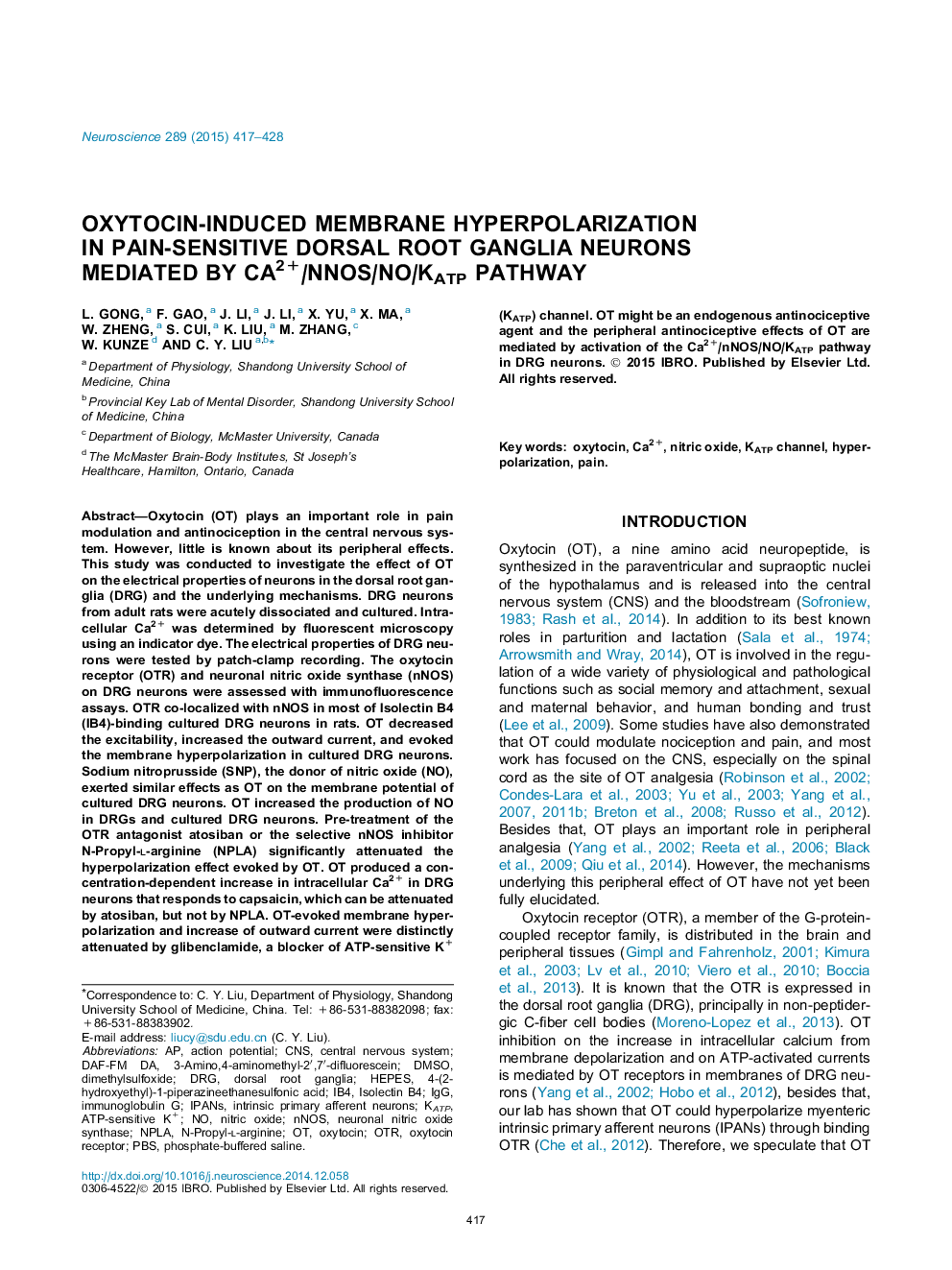| کد مقاله | کد نشریه | سال انتشار | مقاله انگلیسی | نسخه تمام متن |
|---|---|---|---|---|
| 4337548 | 1614787 | 2015 | 12 صفحه PDF | دانلود رایگان |

• Oxytocin treatment decreased excitability of small-sized DRG neurons in rats.
• Oxytocin evoked membrane hyperpolarization in small-sized DRG neurons in rats.
• Oxytocin increased the production of nitric oxide in DRGs and cultured DRG neurons.
• Inhibition of nNOS attenuated the hyperpolarization effect evoked by oxytocin.
• Oxytocin receptor co-localized with nNOS in IB4-labeled DRG neurons in rats.
Oxytocin (OT) plays an important role in pain modulation and antinociception in the central nervous system. However, little is known about its peripheral effects. This study was conducted to investigate the effect of OT on the electrical properties of neurons in the dorsal root ganglia (DRG) and the underlying mechanisms. DRG neurons from adult rats were acutely dissociated and cultured. Intracellular Ca2+ was determined by fluorescent microscopy using an indicator dye. The electrical properties of DRG neurons were tested by patch-clamp recording. The oxytocin receptor (OTR) and neuronal nitric oxide synthase (nNOS) on DRG neurons were assessed with immunofluorescence assays. OTR co-localized with nNOS in most of Isolectin B4 (IB4)-binding cultured DRG neurons in rats. OT decreased the excitability, increased the outward current, and evoked the membrane hyperpolarization in cultured DRG neurons. Sodium nitroprusside (SNP), the donor of nitric oxide (NO), exerted similar effects as OT on the membrane potential of cultured DRG neurons. OT increased the production of NO in DRGs and cultured DRG neurons. Pre-treatment of the OTR antagonist atosiban or the selective nNOS inhibitor N-Propyl-l-arginine (NPLA) significantly attenuated the hyperpolarization effect evoked by OT. OT produced a concentration-dependent increase in intracellular Ca2+ in DRG neurons that responds to capsaicin, which can be attenuated by atosiban, but not by NPLA. OT-evoked membrane hyperpolarization and increase of outward current were distinctly attenuated by glibenclamide, a blocker of ATP-sensitive K+ (KATP) channel. OT might be an endogenous antinociceptive agent and the peripheral antinociceptive effects of OT are mediated by activation of the Ca2+/nNOS/NO/KATP pathway in DRG neurons.
Figure optionsDownload high-quality image (133 K)Download as PowerPoint slide
Journal: Neuroscience - Volume 289, 19 March 2015, Pages 417–428